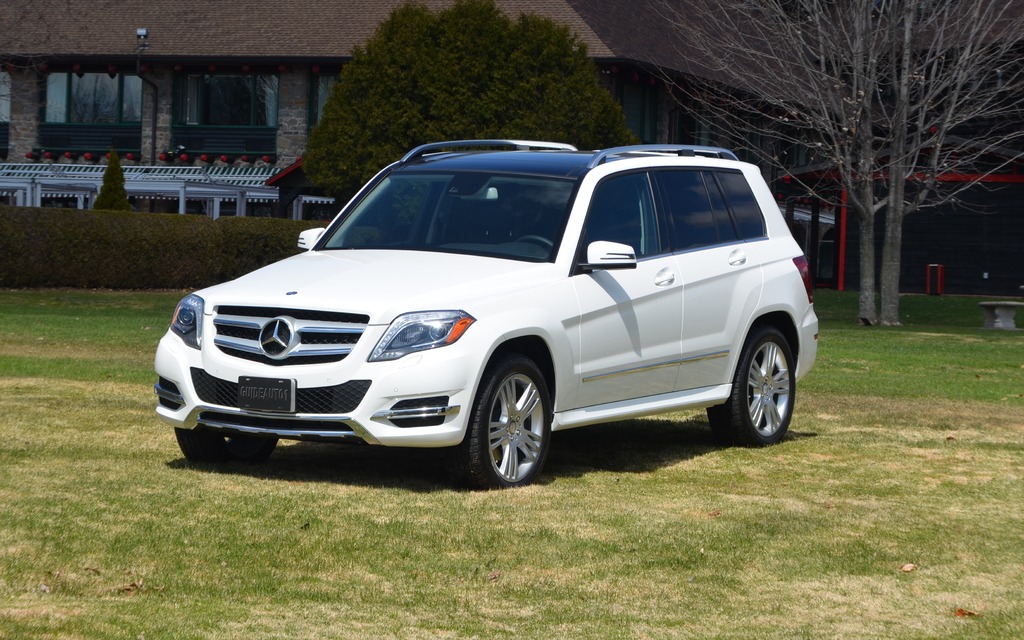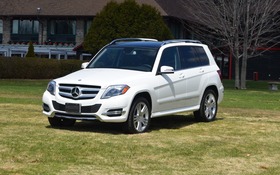2013 Mercedes-Benz GLK250 Bluetec: Is diesel really a cure-all?

| Strong points |
|
|---|---|
| Weak points |
|
At Mercedes-Benz, the GLK compact SUV is second in sales behind the very popular C-Class, so it’s no surprise that the famous German brand is taking special care of it.
Unveiled in 2009, the GLK was due for a minor facelift. They used the usual recipe as before, but played a little with the front end (headlights, bumper) and with the taillights. The passenger compartment, on the other hand, warranted more consideration. The most notable change is to the shifter, which moves from the central console to the steering column, like it used to be back in the day. Although it’s electronic now, I still think that they had it right back in the day. This moves means that Mercedes can offer more storage space. The dashboard has also been updated and now features bigger gauges, a more modern steering wheel and round air vents. The result is striking.
If the trend continues…
When the GLK first came to North America, it had but one engine: a 3.5-litre V6. Everywhere else in the world, the GLK was offered with several engines, including diesels. That, of course, is no surprise; Mercedes-Benz has always known a thing or two about diesels.
Now, North America is finally catching up to the rest of the world. The GLK continues to be available with a V6 (we’ll come back to that), but it can also be equipped with a diesel engine, like its big brother, the GL. Since 80% of GL units sold in Canada come with the diesel engine (GL 350 Bluetec), it’s safe to bet that the GLK diesel will be just as popular.
The magic of diesel
The diesel engine found in the GLK 250 is a 2.1-litre (2.143 cc) four-cylinder twin turbo. Don’t waste your time trying to find the link between the engine capacity and the vehicle name. At Mercedes, confusion reigns. In any case, it develops 200 horsepower at 3,800 rpm, which isn’t much, but it redeems itself with a torque of 369 lbs-ft at 1,600 rpm. This mill is paired with the 7G-Tronic Plus automatic transmission that activates the 4Matic all-wheel drive. While Mercedes-Benz usally slaps the “4 Matic” label on all cars equipped with this efficient drive train, the GLK 250 doesn’t mention it at all on its body. However, the word BlueTEC is emblazoned on the liftgate, which surely makes up for it in the eyes of owners.
Mercedes-Benz calls its diesels “BlueTEC,” which is reminiscent of another name: AdBlue. This urea-based liquid helps the motor run extremely clean. You fill it up while you’re changing your oil, making the operation more expensive.
The GLK 250 is a relatively heavy vehicle (1,925 kg), so don’t expect to win any drag races. As with most Mercedes-Benz products, the accelerator isn’t terribly progressive and it’ll take some time to get used to, which may have distorted our impressions considering that we only drove it for half a day. Mercedes claims that it can charge from 0-100 km/hr in eight seconds flat. The GLK 250 really excels when it comes to fuel consumption and the noble manufacturer is announcing a combined 7.2 L/100 km. In reality, that doesn’t mean much. During our test drive, we recorded an excellent average of 7.0 L/100 km, and I imagine that an average fuel consumption of 8.0 L/100 km is realistic. For those who get a nosebleed every time you hear the word “diesel,” let me reassure you. From the inside of the GLK, you almost have to know in advance that there’s a diesel engine lying in front of you. The typical diesel engine noise is a little more audible from the outside, but we’ve come a long way from the rattling, smelly engines of the old days.
The magic of the V6
There GLK can also be outfitted with a 3.5-litre V6 that finally includes direct injection. Thanks to its 302 horsepower and its 273 lbs-ft of torque available between 3,500 and 5,250 rpm, this V6 moves the GLK smoothly and swiftly. Its sound is more pleasant than that of the diesel and it goes from 0-100 km/hr 1.5 seconds faster, according to Mercedes. However, it consumes 2.5 more litres per 100 km (9.7) combined. Our short test drive, 80% of which took place on the highway (at 120 km/hr), gave us an average of 11.4. The V6 is equipped with Start/Stop technology that shuts down the engine when ECO Mode is activated. Too bad the diesel doesn’t offer that feature. Interestingly, both the 2.2- and 3.5-litres can tow 1,588 kg (3,500 pounds). Basically, customers have to decide what’s more important: fuel consumption (and the driving range) of their GLK or its performance.
As for the ride, diesel or not, it’s tough to find fault with the GLK – though the V6 is indeed a little faster both in terms of accelerations and pick-up. Although the diesel has a far superior torque, its pick-up is less powerful. The 80-120 km/h time, after a quick manually timed test, was 7.31 for the GLK250 and 5.28 for the GLK350. However, the 250 is better suited for off-roading (and by off-roading, I don’t mean the bumpy, muddy road leading up to your cottage, I mean real off-roading).
Tanks don’t come cheap!
As for the rest, GLK is classic Mercedes-Benz. The seats are very comfortable, the chassis is so solid that you’ll think you’re driving a tank, the suspension offers an excellent combination of comfort and sportiness, the cost of certain options is scandalous (if you want satellite radio, you have to choose the Premium option at $3,600, whereas the Navigation Package costs $2,400), the central screen is surprisingly small for a vehicle whose dashboard was just redesigned – and it’s not even a touchscreen! Finally, the quality of the materials and finish is exceptional.
Now available at dealerships, the GLK 250 and 350 start at $43,500 and $44,900, respectively. But you can bet your bottom dollar that the total cost will be much higher!











